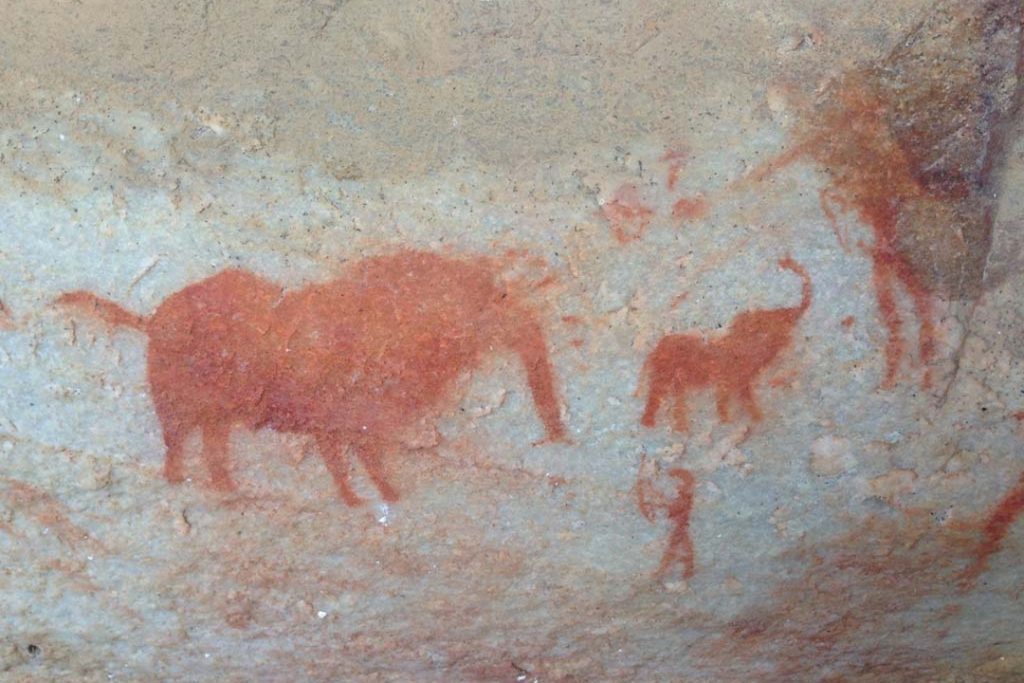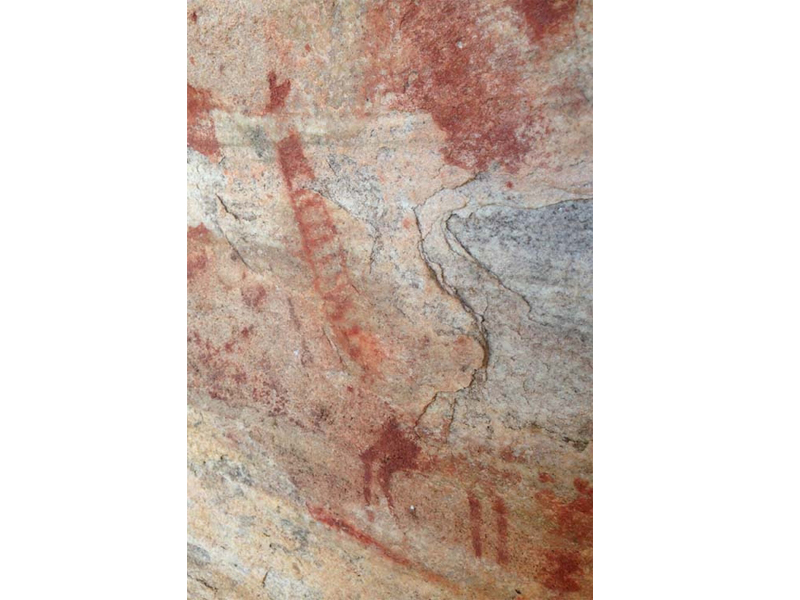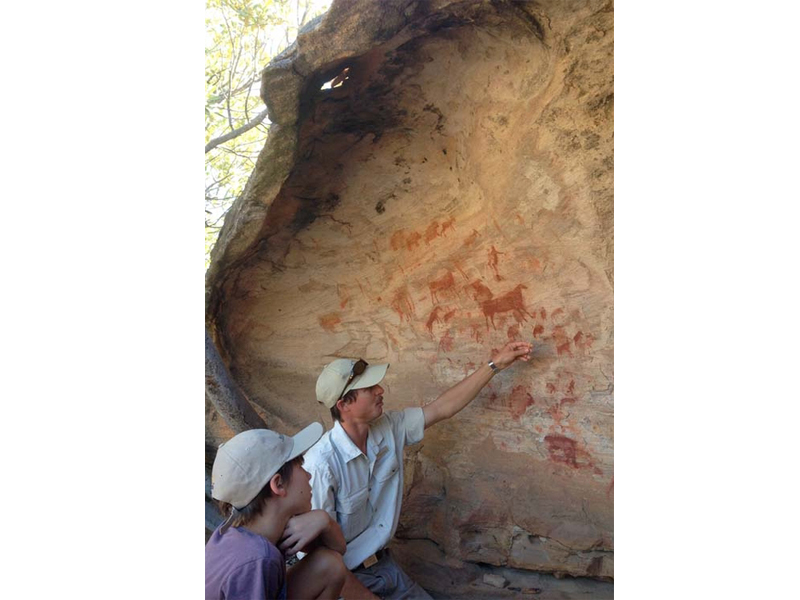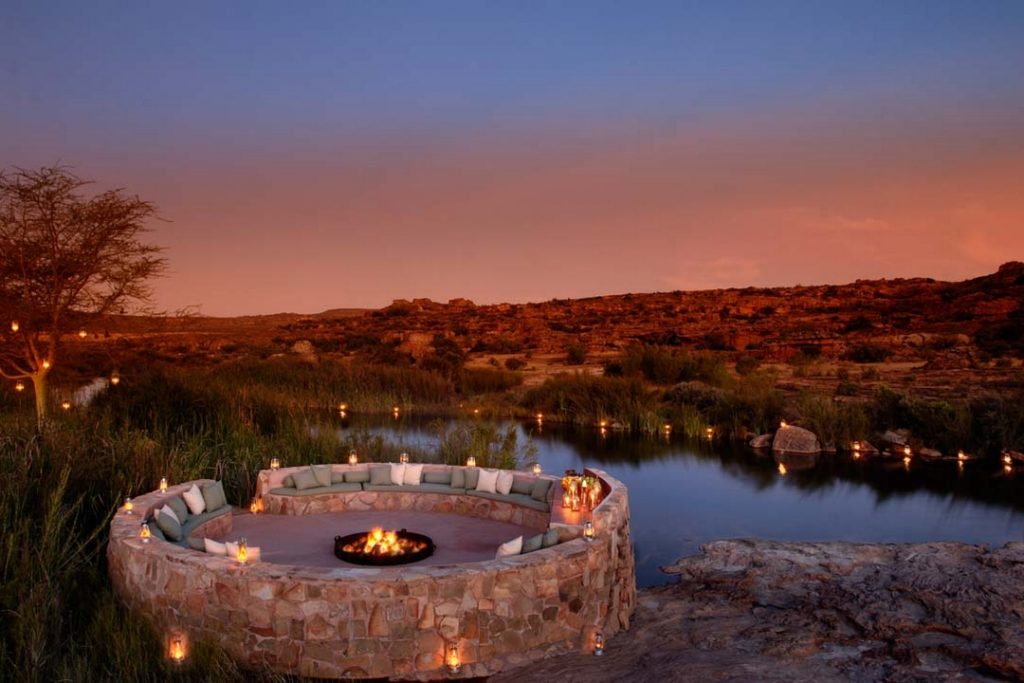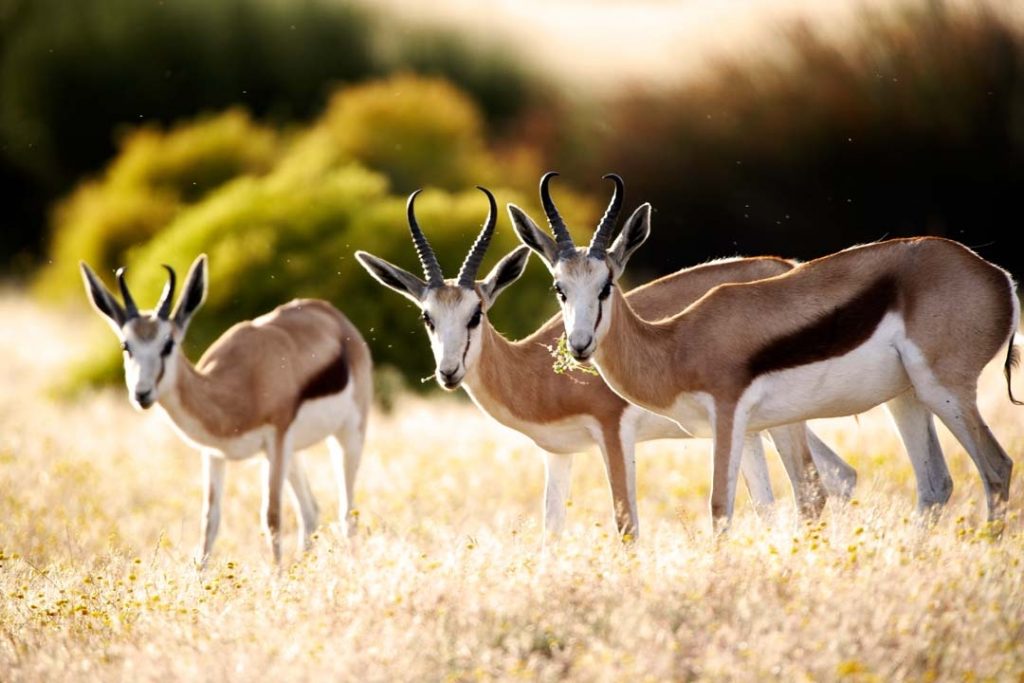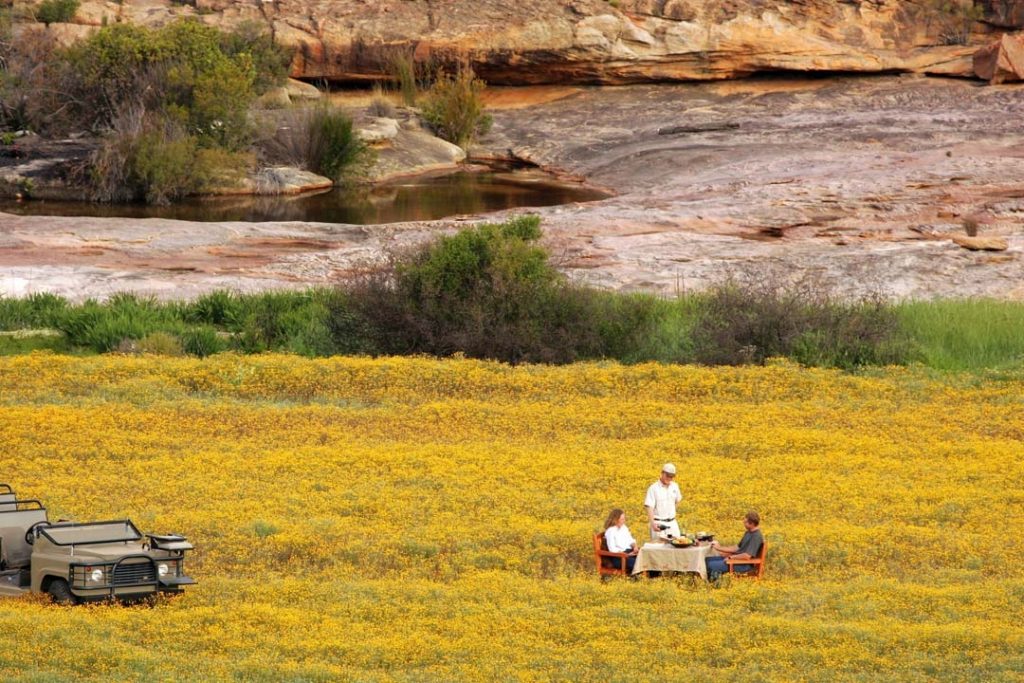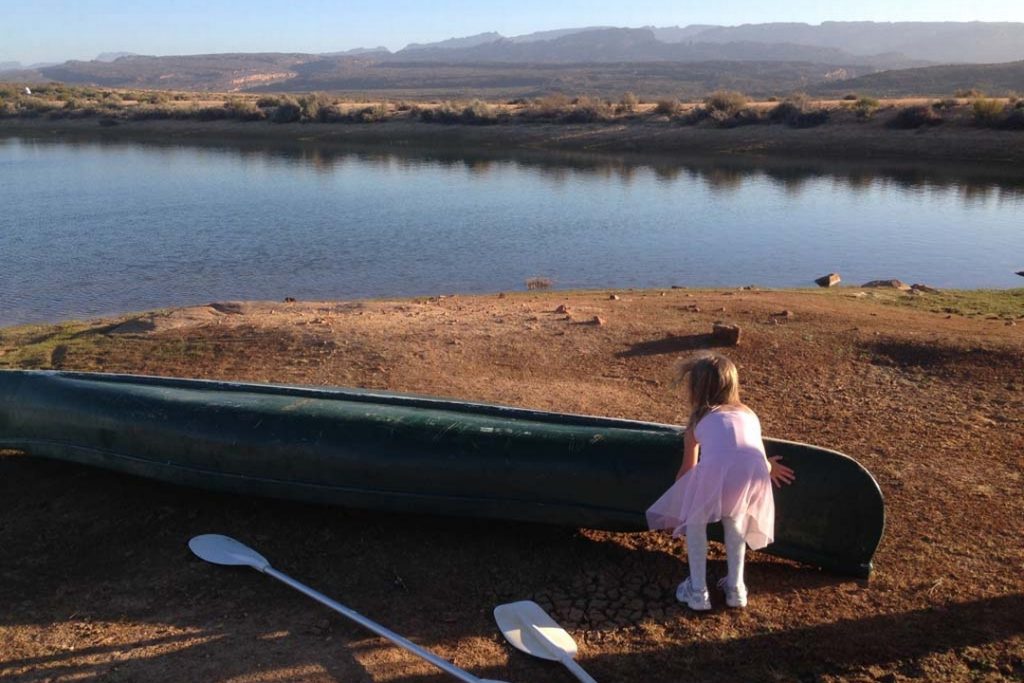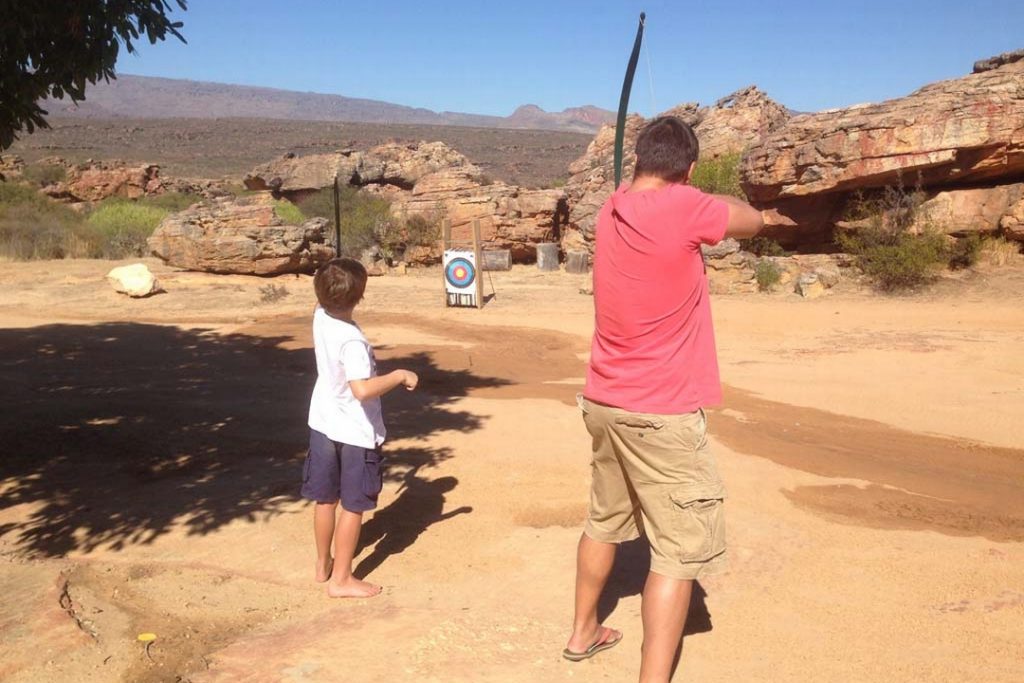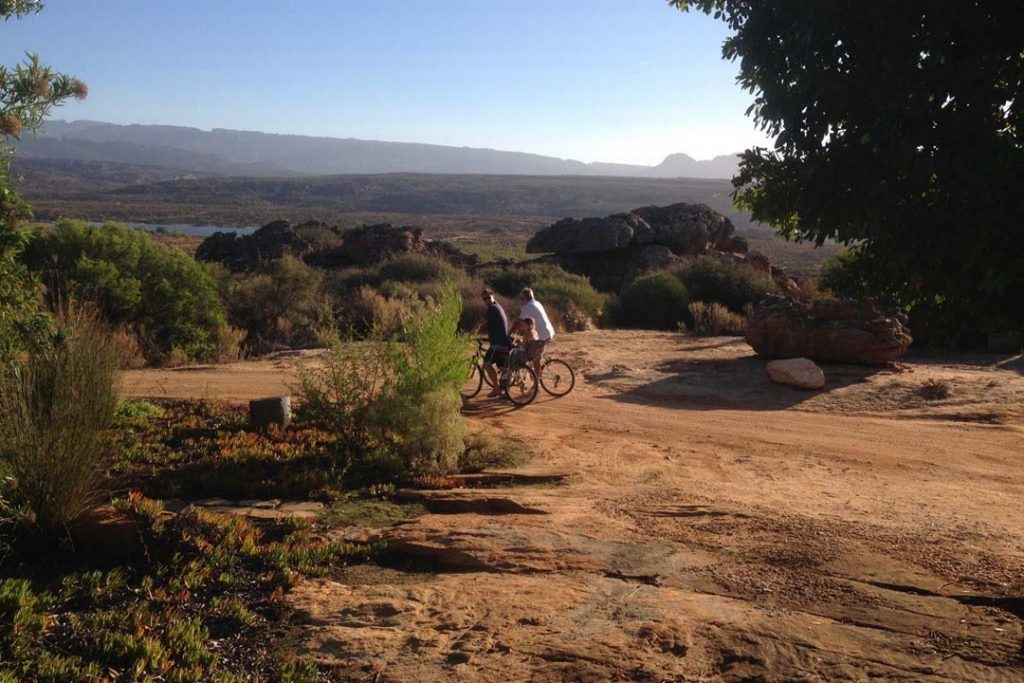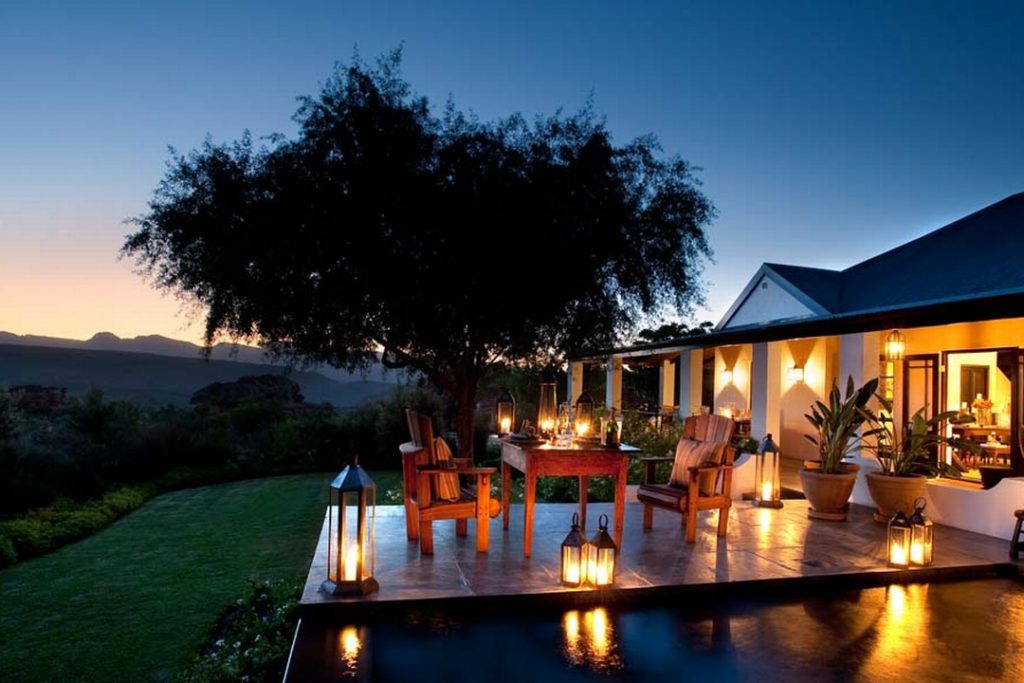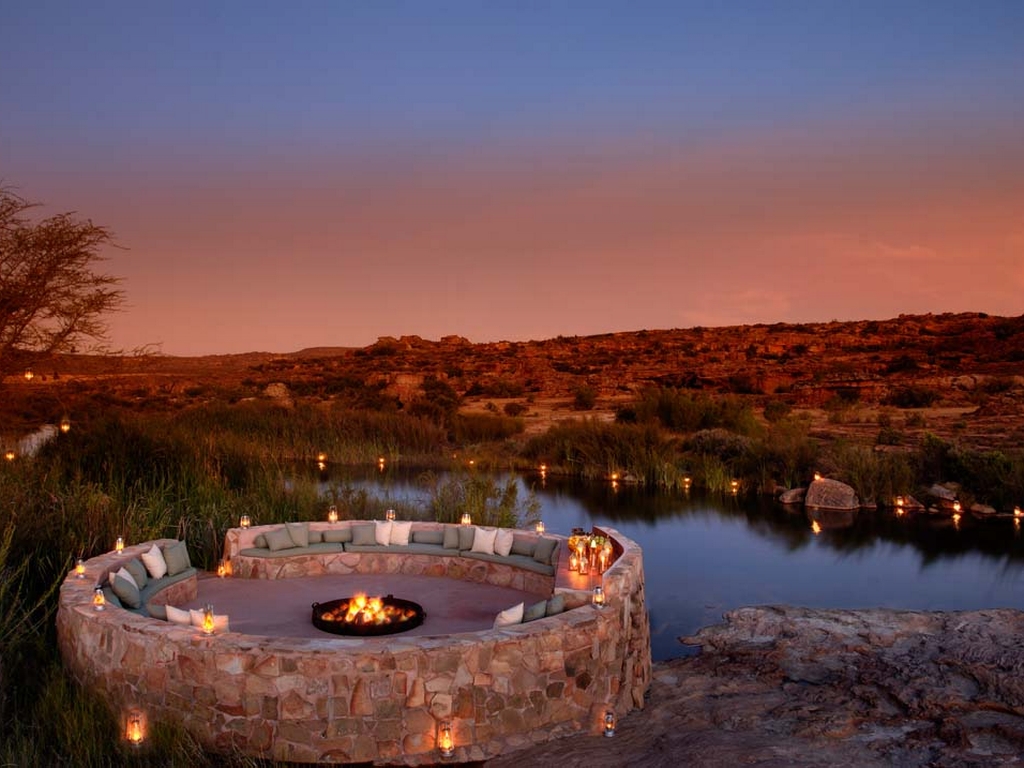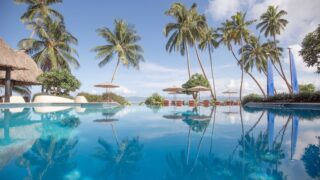Bushmans Kloof is a place that first knocks the breath out of you, with its panoramic vistas and fascinating history, and then leaves you breathing deeply, reinvigorated by your getaway in the foothills of the Cederberg mountains, a three-hour drive from Cape Town.
For me, our stay at Koro Lodge felt like returning to a family homestead; and, indeed, Bushmans Kloof is part of the family-run Red Carnation Hotel Collection, which has been operating globally for 31 years.
Flip through Lara’s awesome South Africa gallery above
Rock art
While the focus is very much on restoration and relaxation, the retreat offers much more. During our walks and open-vehicle excursions, our guide imparted interesting facts on how the San people, or Bushmen, lived in this harsh terrain tens of thousands of years ago. This information is derived mostly from archaeological finds in the vicinity, specifically rock art; Bushmans Kloof has 130 documented sites.
Interestingly, what you see is not the paint itself but the stain from the ochre portion of the picture that has effectively penetrated the porous rock; the colours of black, yellow and white have vanished. So the most commonly illustrated antelope, the eland, typically shows as only a torso, for the other paler colouration has faded away over the centuries.
As there is no ochre rock found in this region of the Cederberg, it’s understood that Bushmen travelled here from other parts of South Africa, bringing small stones with them. They would grind these, adding various organic substances (egg, bird droppings and plant sap, for example) to bind the paint, and to create a range of colours.
The Bushmen didn’t carry many possessions – though a few of their relics can be seen in the Heritage Room at the main camp of Bushmans Kloof. Accordingly, their needs were simple. They used plants for everyday meals and medicine, and for “trance-dancing” – a strategy for healing in which the Bushmen would interact with their subconscious selves, and their ancestors, through dance.
Their art is sometimes hard to decipher, and is open to interpretation; many of the images are derived from the altered states of consciousness of the participants in these rituals. I particularly liked the image of a man confronting an elephant with only a tiny arrow; rather than depicting a ridiculous act or even a genuine attack, the picture simply portrays a transfer of energy. Another painting seemed to show a giraffe, though there are no giraffes in the area – or was it meant to be a ladder? (But who would have had needed a ladder here thousands of years ago?) Antelopes are depicted frequently; they were critical to the survival of the nomadic Bushmen. It was a feat for the Bushmen (for they were small people) to hunt an antelope – particularly an eland, the largest antelope in Africa; aside from skillful archery, it would often require tracking an animal for several days until it fell, injured or drugged.
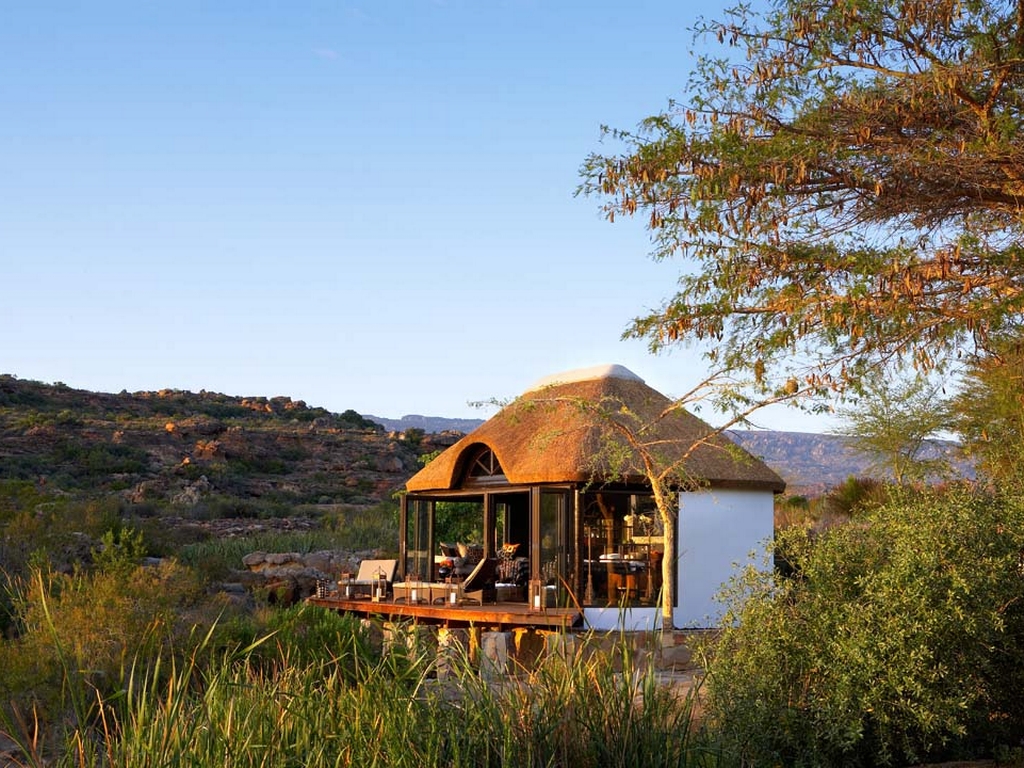
Accommodation
Koro Lodge, previously a farmhouse, sleeps ten people in luxurious, over-sized beds, and the rate includes everything from meals, high tea and drinks, to laundry and a game ranger! The lodge sits just metres away from a dam of water lilies; we enjoyed lying on loungers and watching busy water birds balancing their long feet on lily pads, while we simply lay back soaking in the scene.
In keeping with the hunting skills of the Bushmen, a target is set up daily for archery; we strived to improve our aim each day. The children’s room was filled with books and crayons, and also board games, which we played on the shaded wrap-around verandah beside the rim-flow pool.
Aside from Koro Lodge is a main lodge set on sprawling, manicured lawns that stand out in this rough, rocky landscape. This is accommodation for adults and children over 8 years old, with 16 private rooms and suites decorated with an eclectic combination of ethnic and colonial furnishings. The rooms overlook rock pools, towering cliffs and swimming pools – there’s one large and refreshing swimming pool per cluster of four suites. There’s also a tranquil spa, with appealing white décor, which looks out onto a private garden with canvas umbrellas.
Flora, fauna and more
Despite all its refinement and luxury, Bushmans Kloof isn’t just a pretty face; it has received numerous international awards in recognition of its exceptional environmental and conservation efforts.
Daily nature drives through the reserve are an opportunity to view some of its 35 species of mammal; on our morning drive, we enjoyed watching an elegant oryx (a type of antelope), with metre-long horns, chasing another from his territory. Then we passed male ostriches waving their impressive plumage in display for the females, while a herd of springbok grazed nearby.
Our evening sojourn was coupled with a drinks stop beside a dam, where we chatted to our ranger about the reserve’s projects to protect two endangered animals, the Clanwilliam yellowfish and the very shy Cape leopard. The latter is monitored by infrared cameras in the mountains; and while the chances of seeing one up close are slim, it’s good to know that it can roam this terrain in a natural habitat that includes hares, aardvarks, mongooses, porcupines, caracals and otters.
Bird-watching is also popular; there are 150 species on the reserve. A few of our brave feathered friends visited the lodge regularly during our stay, enjoying the well-irrigated, verdant gardens or stealing breakfast crumbs from our verandah.
The reserve boasts – and protects – a special collection of plants. Late winter and early spring, otherwise considered an “out of season” time to visit, is when the world-famous Cape flowers appear, and the reserve becomes bright with colour. Yet simple wonders of nature can be seen throughout the year, like the seedpod that looks like a hard nut, but when touched by a single drop of moisture, opens up to expose white petals of a flower the size of a fingernail.
On one walk, our guide pointed out the buchu plant, used today for its oils, and in the art of perfumery. He also showed us the snowbush, otherwise known as wild rosemary – when lambs eat this, it flavours the meat that they later provide. Another remarkable plant that we saw was a poisonous bush whose tips had been nibbled off by antelopes; the animals know that eating just a little of the leaves can clear their stomachs of parasites. In these surrounds, the Bushmen lived off everything that grew, and benefited from much of what we might pass by without noticing.
Beside the main lodge are gardens that supply fresh produce for the Bushmans Kloof chefs. Immaculately maintained, they are a pleasure to saunter through while enjoying the sight of herbs, veggie patches and orchards.
A final word
For those wanting more than the daily game drive through the reserve, there’s a selection of well-marked hiking trails of varying degrees of difficulty. I smiled when reading one of the pointers on the map given to hikers: “Take a breather at the big tree with its roots in the rocks.” It would surely stand out.
We made the most of our surroundings by participating in less-vigorous activities that were suited to the whole family – cycling on the provided bikes and canoeing on the calm dam, and just soaking in the vast expanse of nature.
This story first appeared in Expat Living’s August-September 2015 issue.


